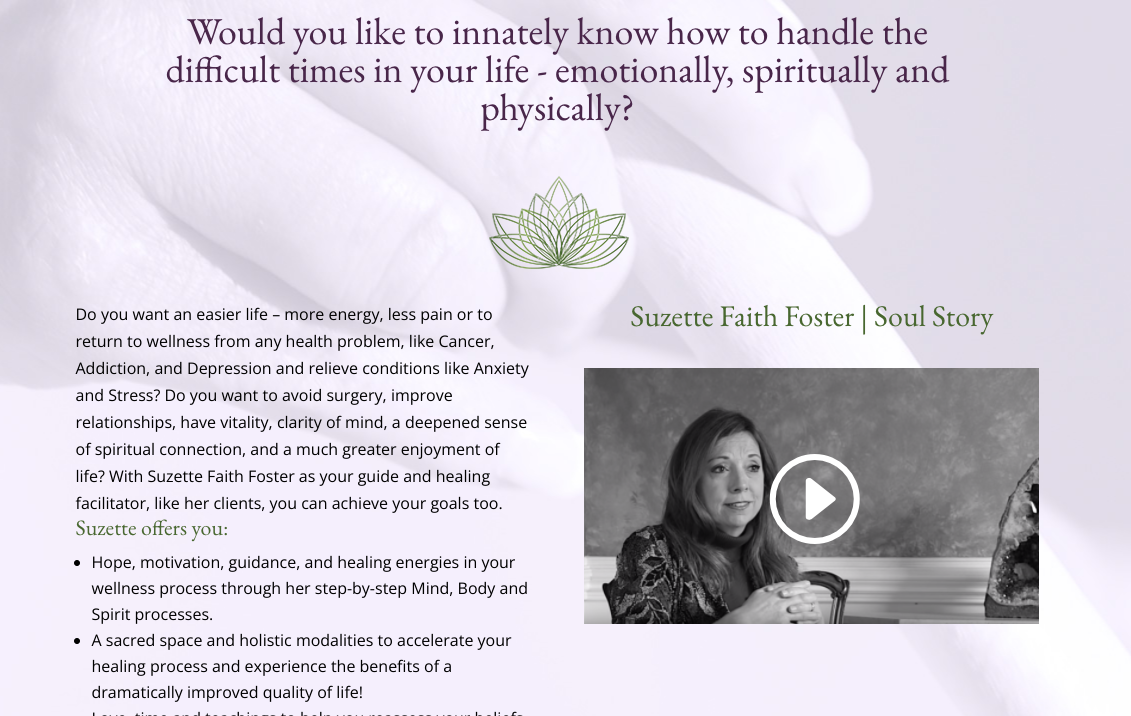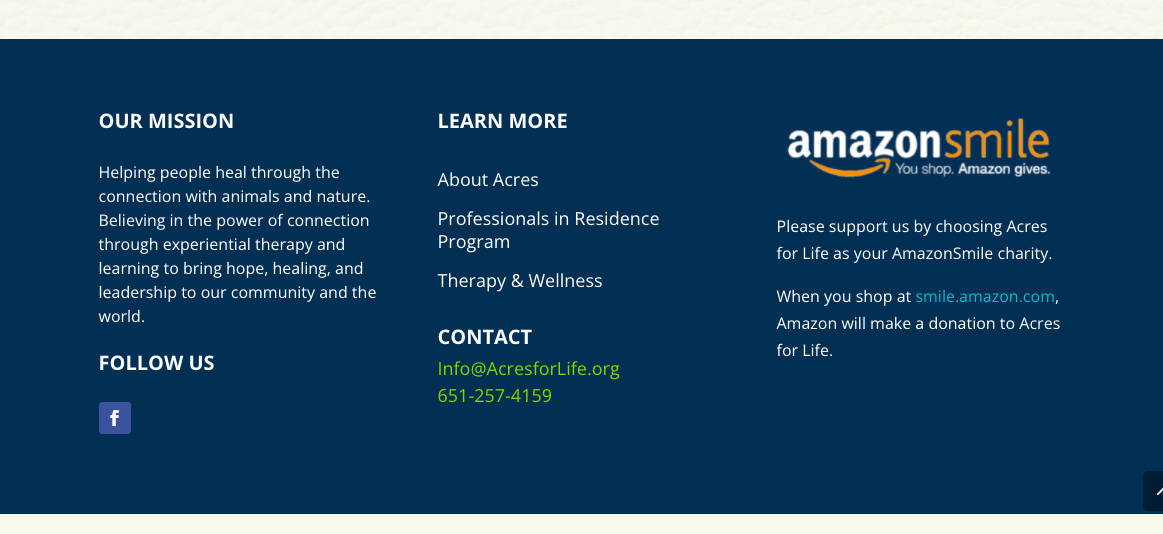They Really Don't Care about You
Nov 10, 2021
Here’s the truth: 82% of first-time visitors to your website take no action. Why is that?
Because they are there for one reason, and one reason only - to see if you can help them solve their problem.
Yet, so many website’s homepages go on and on about you, your business, your mission. Your ‘this’ and your ‘that.’
Well...I’m happy for you. Good for you. And...your visitor doesn’t care.
See ya! Adios. Arrivederci. Au Revoir. Sayonara. Auf Wiedersehen. Do svidaniya.
That’s what your visitor does when they can’t find the answer they are looking for - in 6 seconds.
I get it. I see it all the time. And you are definitely not alone. But your website is the hub of your marketing. You drive traffic to it from social media, landing pages, email marketing.
Are you ready to receive all that great traffic you’re spending marketing dollars on? Or are they just going to click away when they land there?
Because your website must engage. And must be EASY to navigate. Your website, in it's highest optimization, should be a marketing machine.
When you treat it like a pretty brochure, you’re ignoring the power of digital marketing! In today’s world, it’s critical to get this right. Used strategically, your website becomes a tool to build trust and guide the customer journey.
Always have your ideal customer in your heart. Know their core problem, and what they really desire. Paint the picture of what it feels like to have that problem solved.
It’s not rocket science - but at Soul Story Creative, we go through a checklist to make sure we are always covering the cutting edge digital marketing best practices. And now with 2022 looming, it’s more important than ever if you want to stand out and make an impact.
So stop rambling on and on about how great you are. Tell your visitors how you are going to make their life better, and let’s lower that 82% ‘no-action’ number.
The good news is that we’ve been building great high-functioning websites for almost a decade. Let’s look at the key elements of a high-functioning homepage. This is exactly what we do every time we build or refresh a website.
Today's Websites
Many of today’s web designers don’t have a clue about digital marketing best practices in today’s world. You’ve got to think about more than colors, logos, fonts and images. Visitors want to be engaged and get their answers fast. They don’t want to have to fish for answers, or pour through paragraphs of copy.
They want to know if you can make their life better - and if so, what’s the next step. Period.
By focusing only on design, you risk losing revenue by forgetting about content and SEO. Yes, it’s true - your website needs to have impeccable design that is strategic and guides the visitor where you want them to go.
But when the business owner is hyper-focused on having a ‘beautiful eye-catching website,’ the web designer usually does just that. Gives the business owner what they want.
But this mentality comes at great cost to the business owner.
Not keeping clear messaging, SEO, content, strategy, user experience, website functionality, and design in mind, companies risk losing revenue and opportunities.
The Purpose of A Website
The biggest mistake I see business owners making in today’s digital marketing world is spending money on marketing tactics that drive traffic to an old dirt road with nothing but tumbleweeds blowing in the wind.
Remember, your prospect’s journey starts with doing their own research online. They don’t have you there to guide them and explain.
It’s critical that you have a clear, cohesive message about them, not you, that allows them to act when they do find you. They will decide if you are right for them and they are interested in buying. It’s up to you to make this decision easy for them.
The true purpose of websites has changed. Websites used to be a way to get information about a company, a service and the more pages you could pack in with more information made you a success.
But those days are long gone. Sadly, many company websites haven’t gotten this right yet.
Let’s go through it now.
First, What is a Website’s Role?
- Get found – This is where good SEO practices come in with your copy. Optimize for search by having a clear, cohesive message that includes long-tail search phrases that people actually type in when they search.
- Build trust – Your website’s homepage should let the visitor know in 6 seconds or less that you truly understand their problem. When they feel that, trust begins to develop.
- Inspire – They feel validated, so now your website messaging can go further as they stay on your site and begin to explore. Now is your chance to emphasize the costs of their problem and how you are proposing to solve it.
- Nurture – The old marketing adage still applies - people need to see you and your offer multiple times before they will buy. A high-functioning website always has a way to capture names and email addresses. Email marketing is still a highly effective strategy with a whopping 1400% return on investment. Continue inspiring and educating your leads with valuable content to keep them in your circle all the way through the sale.
- Convert – Conversions are the goal, right? This can mean any number of things. Make it an obvious no-brainer by directly inviting an engagement whether it’s scheduling a call, signing up for a free webinar, or buying a program, service, or product. Reverse engineer the design of your homepage to guide them to this action you want them to take.
Always Tell A Story
Your website is the story about them - the story your customers and prospects are telling themselves.
What most get wrong about this is they tell the wrong story. What do I mean by that? A brand story is the story of them, your ideal customer - not you. It’s about their challenges and struggles, and your ability to connect with them in a way that they feel you really understand their plight.
Tell the story of your services in a way that they can see themselves in that story.
Be their Trusted Guide
Design your website in a way that guides your prospects through a buying process beginning with not trying to put everything you know on the homepage. No one has time nor the interest to read a dissertation! They are seeking a solution to a specific problem. Address that problem clearly and show them what their life / business will be like after they work with you.
Help them decide how they should move forward and take the next step. Like opting-in for a pdf ebook that gives them more information about your services, and that allows you to email them.
Be strategic. Ask yourself, “What do I want them to do when they land on my homepage? What actions and next steps should they take to find the solutions they’re looking for?”
Checklist of Homepage Elements
This is where the super quick first impression comes in. Do a homepage audit on your business and implement the following when appropriate for your business.
-
Your Brand Promise
This is the one thing you feel 100% confident in being able to deliver on to every client or customer you serve. For example, “Supporting Your People to Boost Your Bottom Line.” Put it right up front where people will see it.

-
Value Proposition
The end-benefit of your service. Attention grabbing and emotive.
This is what I call the value stack: “Stand Out”, “Increase Revenue”, “Become Known”

-
Invitation (Call To Action)
This is one of the most overlooked elements and it’s a big mistake to do so. Often I hear from clients, “I don’t want to be salesy” or “it feels pushy.” But without a call to action (CTA) your visitor doesn’t have any action to take. Think of this as an invitation - they can decide to not engage, or they can say ‘YES!” and you just might have a new customer. Guide people through the customer journey and tell them what to do next, directly.

-
Contact details
Make it easy for people to contact you. Be personable and approachable.

-
Visual branding
Visual branding is part of the overall strategy and is one of the most important elements of conveying your brand story. If you don’t pay attention to this, you won’t keep their attention long enough to pique their curiosity to explore further.
Check out one of my favorite brands, Sunday’s. They do a great job of marrying visual branding and showcasing their brand’s personality at every touchpoint. And the journey to buy is easy and fun.

-
Video
Featuring video on your homepage can be powerful. Video allows visitors to get a sense of who you are and what you stand for. Suzette Foster of Choose2Thrive.com has showcased her Soul Story Film right on her homepage.

-
State the Problems
Identify the problems you solve and make it easy for website visitors to recognize it. This will allow them to quickly know if they’re on a site that will address their needs.

-
In their words
Testimonials and case studies are the fastest way to cultivate trust on your homepage, whether they be logos of current customers or testimonials for your clients, make it a best practice to collect these soundbites and stories ongoing. Put them on the homepage and sprinkled throughout the site.

-
Mobile optimization
Mobile search is increasing every year and not slowing down! Google is even penalizing sites that aren’t optimizing for mobile because it provides a bad user experience.

To avoid frustrating potential customers and losing rank in search engine results pages, be sure to optimize your site for mobile. Most web design platforms make this easy with the ability to switch “views” between desktop and mobile so you can see how everything lays out.
-
Clear Path
Many businesses have different types of clients they serve. Make it easy for them to know which path they need to take to find the specific answers they’re looking for.

-
Core services
One of the things many companies don’t do enough of is list out their core services on their homepage. For now, however, people have expressed interest in having all of the information they need on one page rather than clicking around a website. In addition to pleasing your prospects, adding more information on the homepage helps boost SEO as well.

-
Resource menu
Last but not least, add a menu at the bottom of the homepage (in the footer) with links to important resources, site pages, and social media channels. Be sure to include contact information there as well. Prospects expect to find the information they’re looking for in this area of the website. Don’t disappoint them.
Want to know if your website is working for you? Schedule a website audit.
Get Instant Access to our FREE Course
CLEAR POWERFUL BRAND
Emerge your Soul Power Positioning
and stand out to those you are want to serve.
We hate SPAM. We will never sell your information, for any reason whatsoever.


